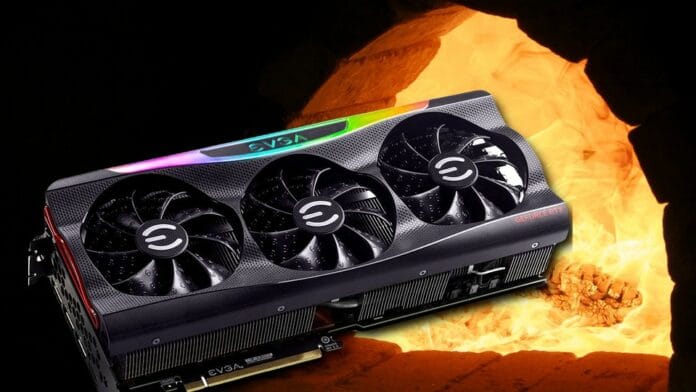According to manufacturer EVGA, the reason for the damage to the RTX 3090s was not the fan control, but an error in production.
The closed beta for Amazon’s fantasy MMO New World is long over, but one of the most explosive questions about the role-playing game hopeful has not yet been fully clarified: What is ultimately the reason for the defective graphics cards?
The Open Beta of New World is already just around the corner. We have prepared all the information on the start, duration, content and more for you in the following article:
New World Beta: Everything about duration, keys, content and more
Just a reminder: Shortly after the start of the closed beta, there were more and more reports about broken graphics cards: According to these reports, high-end models such as the Nvidia Geforce RTX 3080 and RTX 3090 and especially products from the manufacturer EVGA were damaged.
The colleagues from igor’sLAB provided two possible explanations:
– EVGA is the problem: Allegedly, the chip for fan control (Fan Control IC) simply burned out.
– Nvidia is the problem: It seems as if the sensors for controlling the power consumption did not resolve finely enough, so that the GPU consumes too much power from 1,000 frames per second. Such high frame rates occurred in New World because the FPS were not initially limited in the menu. The developers have changed this in the wake of reports about defective GPUs.
Until now, it was assumed that both explanations were correct. However, there has been no definitive explanation for the phenomenon to date.
EVGA provides concrete answer to broken RTX 3090
Graphics card manufacturer EVGA has now given a concrete answer to PCWorld, however, and clearly ruled out the possibility that the defective accelerators from its own production are a problem with the fan control. Quote PCWorld:
“All of the GPUs are cards from an early production run from 2020. An X-ray analysis revealed that the solder joints around the MOSFET circuits that supply the affected cards with power were apparently poorly processed.”
When asked how many cards were affected by the weak solder joints, there was no concrete answer, but it is said to be significantly less than one per cent (of all RTX 3090s produced). A total of two dozen broken RTX 3090s had been sent to the company.
As far as models from other manufacturers are concerned, this does not provide an answer. We therefore continue to assume that the resolution of the monitoring circuitry is too low.


